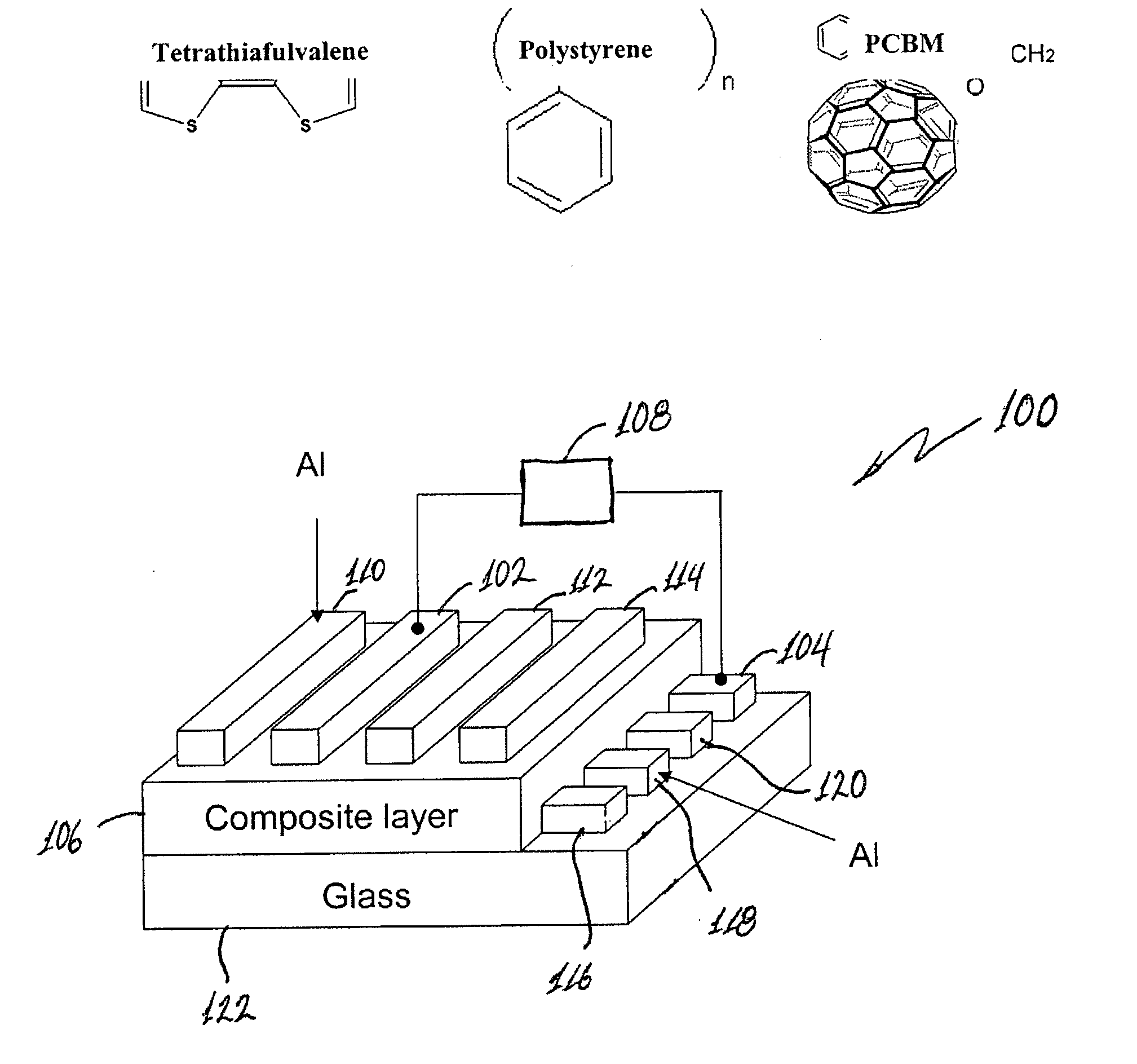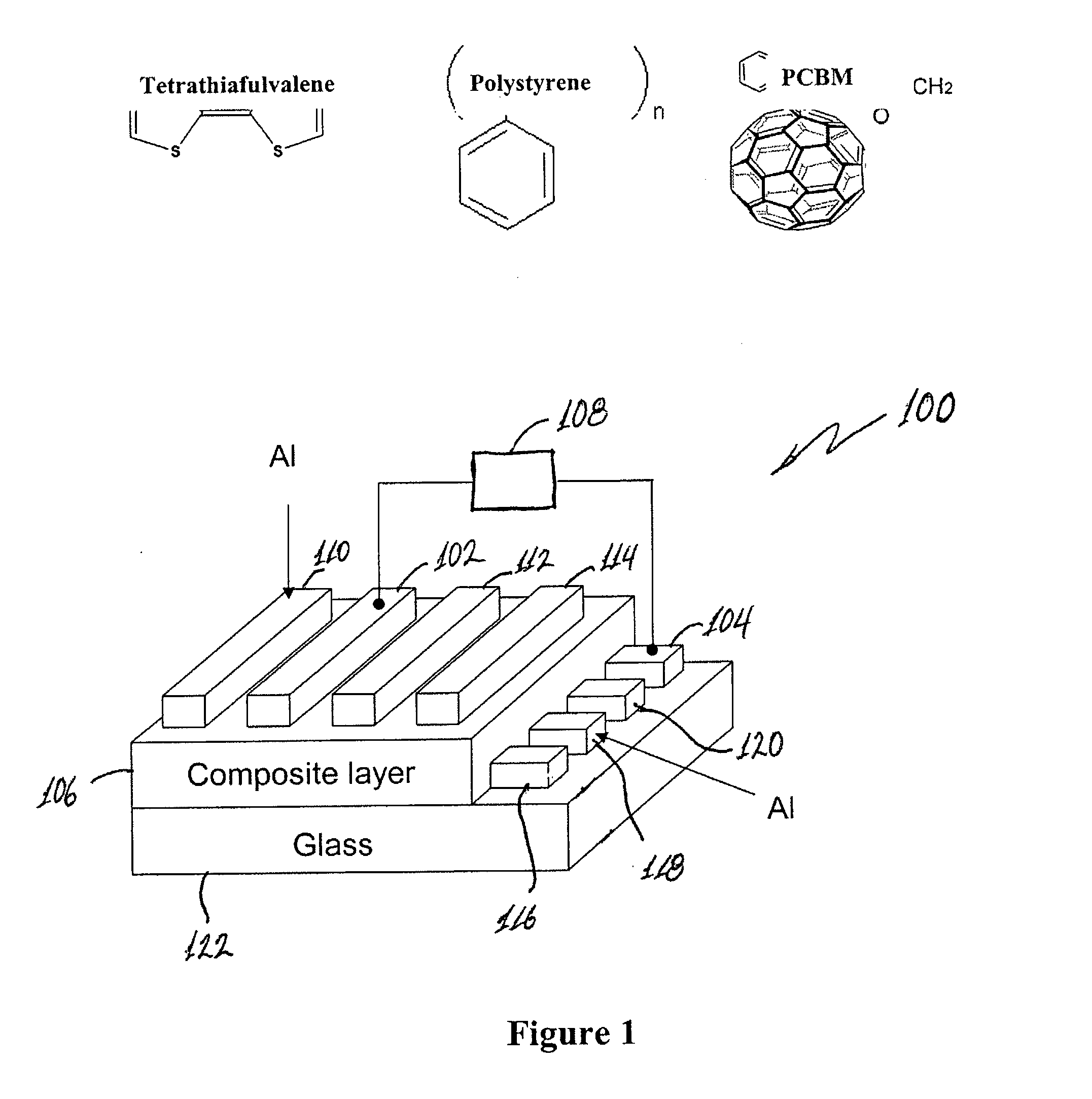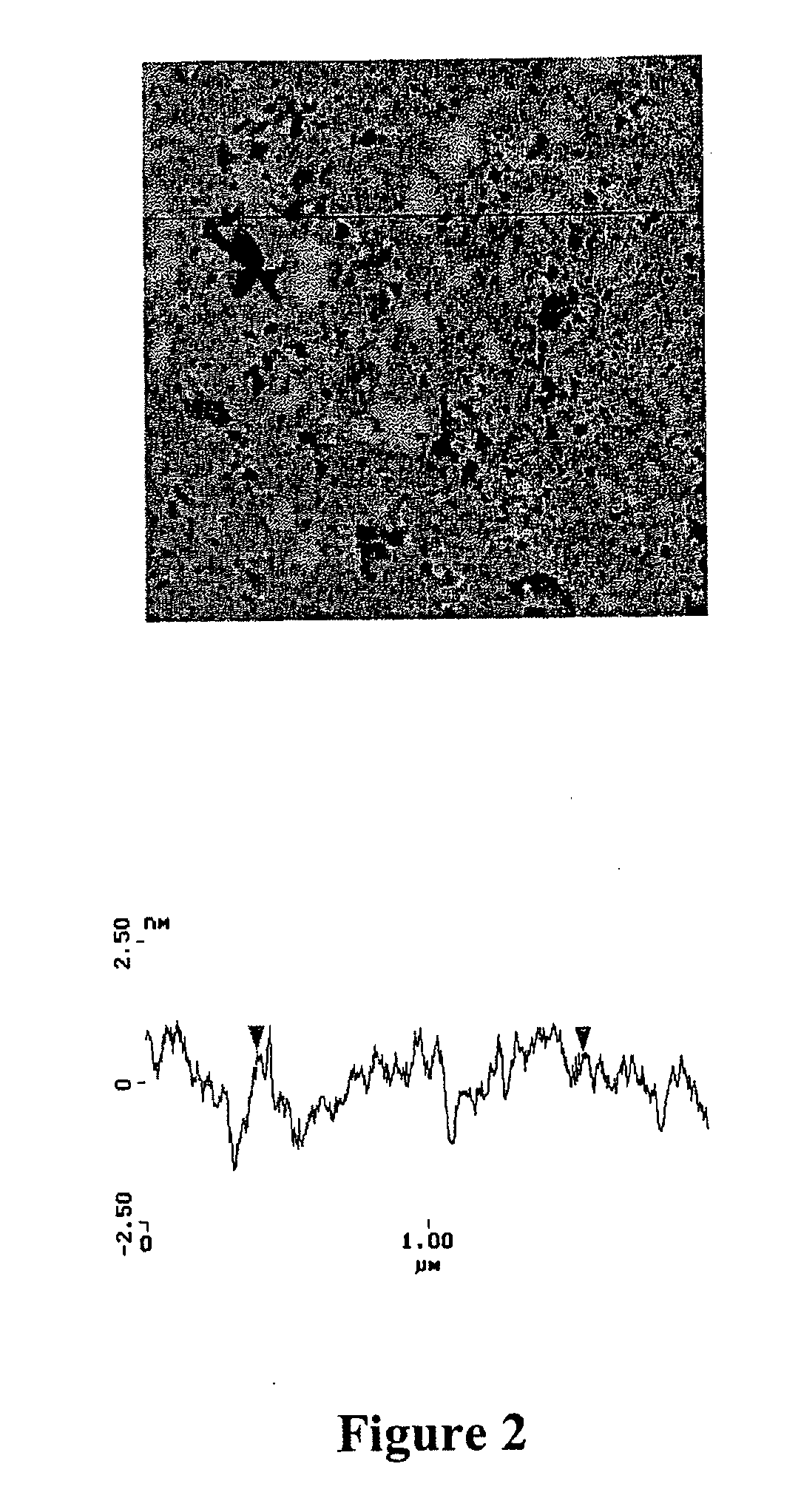Organic-Complex Thin Film For Nonvolatile Memory Applications
a nonvolatile memory and complex technology, applied in the field of organic composite materials, can solve the problems of strict evaporation conditions and requirements
- Summary
- Abstract
- Description
- Claims
- Application Information
AI Technical Summary
Problems solved by technology
Method used
Image
Examples
example
[0024] Examples of chemical structures of the materials of the device of the embodiment of FIG. 1 are indicated in FIG. 1. The device fabrication procedure involves deposition of aluminum (Al) 0.2 mm in width and 75 nm in thickness on thoroughly cleaned glass substrates to form the bottom electrode by thermal evaporation under vacuum (below 6×10−6 Torr) in this example. Before spin-coating the composite layer, the substrates were exposed to UV-ozone treatment for 15 min. Then, the polymer film was formed by spin-coating 1,2-dichlorobenzenic solution of 1.2 wt. % polystyrene and 0.8 wt. % TTF and 0.8 wt. % PCBM. Good results have been obtained by using amounts of electron acceptor (PCBM) and electron donor (TTF) to be about the same. However, the relative amounts may vary. In addition good results were obtained using weight ratios of polymer matrix (PS):electron acceptor (PCBM):electron donor (TTF) in a range of about 1:1:1 to 10:1:1.
[0025] The deposited film was thermally annealed ...
PUM
| Property | Measurement | Unit |
|---|---|---|
| width | aaaaa | aaaaa |
| width | aaaaa | aaaaa |
| thickness | aaaaa | aaaaa |
Abstract
Description
Claims
Application Information
 Login to View More
Login to View More - R&D
- Intellectual Property
- Life Sciences
- Materials
- Tech Scout
- Unparalleled Data Quality
- Higher Quality Content
- 60% Fewer Hallucinations
Browse by: Latest US Patents, China's latest patents, Technical Efficacy Thesaurus, Application Domain, Technology Topic, Popular Technical Reports.
© 2025 PatSnap. All rights reserved.Legal|Privacy policy|Modern Slavery Act Transparency Statement|Sitemap|About US| Contact US: help@patsnap.com



